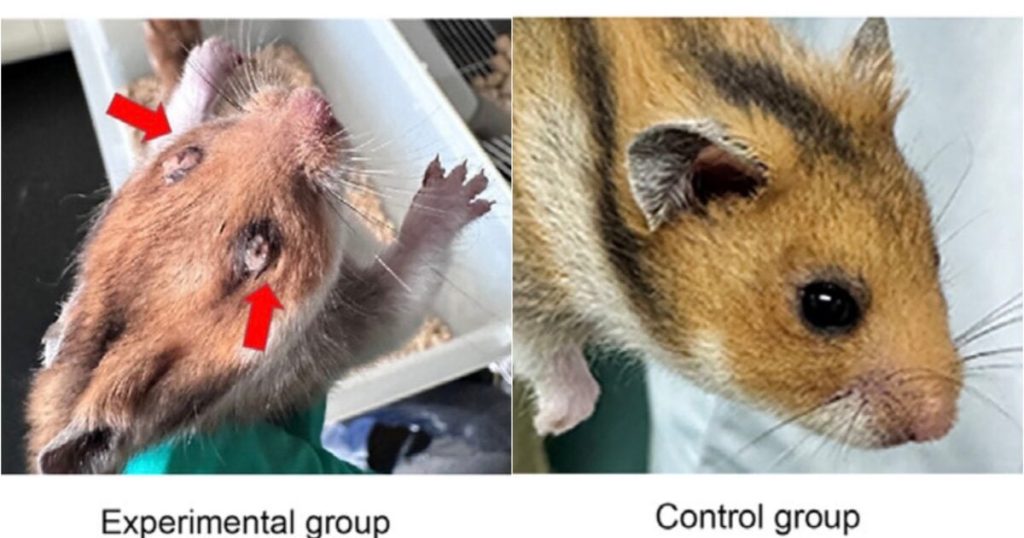A team of Chinese researchers has created a mutant strain of the Ebola virus that bypasses higher biosafety regulations, leading to the death of a test group of hamsters, as reported by the Daily Mail.
The study, recently published in Virologica Sinica, aimed to establish a surrogate model for human Ebola virus disease that could be handled in lower Biosafety Level 2 (BSL-2) facilities, typically less stringent than the Biosafety Level 4 (BSL-4) required for handling wild-type Ebola. This less restrictive environment is intended to facilitate easier and more frequent research, including vaccine development.
In this experiment led by Wanying Yang and colleagues from the Changchun Veterinary Research Institute of the Chinese Academy of Agricultural Sciences, a recombinant vesicular stomatitis virus was engineered to express the glycoprotein of the Ebola virus.
This engineered virus, named VSV-EBOV/GP, was then used to infect Syrian hamsters, creating a model of lethal Ebola virus disease (EVD) under biosafety level 2 (BSL-2) conditions.
The scientists injected a common livestock ailment with the Ebola protein responsible for cell infection and spread in humans, which led to the hamsters developing severe disease symptoms akin to those observed in human Ebola patients.
Severe Symptoms and Deaths in Lab Hamsters
The experiment involved ten hamsters, five males and five females, all three weeks old. The female hamsters exhibited severe symptoms, including decreased body temperature and significant weight loss, leading to their death within two to three days. The males also showed weight loss and succumbed by three and a half days, though two males survived, eventually gaining weight.
Post-mortem analysis revealed that the virus had accumulated in various organs, with the highest levels in the liver and the lowest in the brain. The infected hamsters developed severe symptoms akin to human Ebola virus disease, including:
Rapid Weight Loss: Hamsters lost up to 15% of their body weight within two days post-infection.
Multi-Organ Failure: Pathological changes were observed in multiple organs, especially the liver, spleen, lungs, and kidneys.
High Viral Loads: Viral loads in the liver were as high as 108.2 TCID50 per gram of tissue, suggesting significant hepatophilic behavior.
Severe Uveitis: Eye infections led to impaired vision and exudate formation, a condition resembling uveitis observed in human Ebola survivors.
Credit: Establishment and application of a surrogate model for human Ebola virus disease in BSL-2 laboratory study
The experiment has drawn widespread due to ethical and safety concerns and the potential fears of another lab leak scenario:
Gain-of-Function Research: The creation of a mutant Ebola virus falls under gain-of-function research, which has historically been contentious due to the potential for accidental release or misuse.
Lack of BSL-4 Facilities: Ebola virus typically requires handling in biosafety level 4 (BSL-4) laboratories. Conducting similar research under BSL-2 conditions, as done in this study, raises questions about biosafety protocols.
The research team defended their work, citing the urgency of developing rapid preclinical models for testing Ebola vaccines and therapeutics. According to lead author Wanying Yang:
“This surrogate model represents a safe, effective, and economical tool for rapid preclinical evaluation of medical countermeasures against Ebola virus disease under BSL-2 conditions, which would accelerate technological advances and breakthroughs in confronting Ebola virus disease.”
You can read the study here:
The post Chinese Scientists Engineer Mutant Ebola Virus in Controversial Experiment, Causing Severe Symptoms and Deaths in Lab Hamsters appeared first on The Gateway Pundit.







